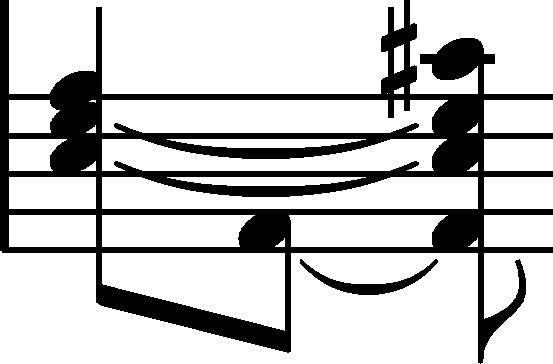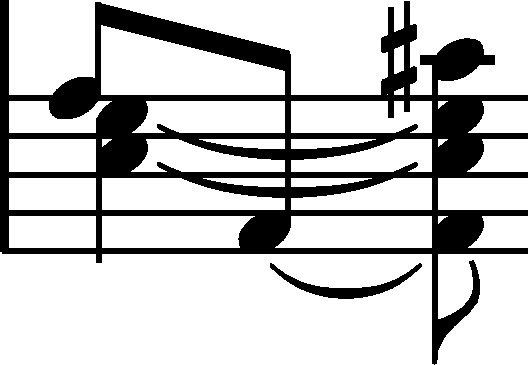



When interpreted literally, the notation of the 1st chord in FE is ambiguous in terms of rhythmic values of the particular elements. It may correspond to the notation of [A], which could have had the following form:  (Chopin generally wrote all noteheads vertically and put stems on the right-hand side of noteheads). The interpretation we suggest, both as the text of FE and the main text, is based on the following assumptions:
(Chopin generally wrote all noteheads vertically and put stems on the right-hand side of noteheads). The interpretation we suggest, both as the text of FE and the main text, is based on the following assumptions:
- the c
 2-e2 third should be a crotchet, since it is held to the 2nd beat of the bar,
2-e2 third should be a crotchet, since it is held to the 2nd beat of the bar, - all 3 notes should belong to the same part, since they are combined with one stem.
Alternatively, if we assume that one stem, pointing to both directions, is a result of an inaccurate interpretation of [A], we could interpret the notation of FE as a chord made of two separated 'parts' – the c 2-e2 crotchet and the f
2-e2 crotchet and the f 2 quaver. If we preserved the shared nature of stems, the notation would be as follows:
2 quaver. If we preserved the shared nature of stems, the notation would be as follows:  (cf. Rondo in E
(cf. Rondo in E op. 16, bars 344-346); in turn, if we preserved the direction of the quaver beam, we would obtain the notation that we propose as an alternative suggestion.
op. 16, bars 344-346); in turn, if we preserved the direction of the quaver beam, we would obtain the notation that we propose as an alternative suggestion.
The version of GE and EE, which is yet another attempt at the interpretation of the notation of FE, is unambiguous, yet it is unjustified by the steps of the parts and rhythmically inconsistent.
Although the problem is difficult from the editorial point of view, its practical meaning is marginal if one sticks to the authentic pedalling.
category imprint: Editorial revisions
issues: Inaccuracies in GE, Inaccuracies in FE, EE inaccuracies
notation: Rhythm
Back to note



